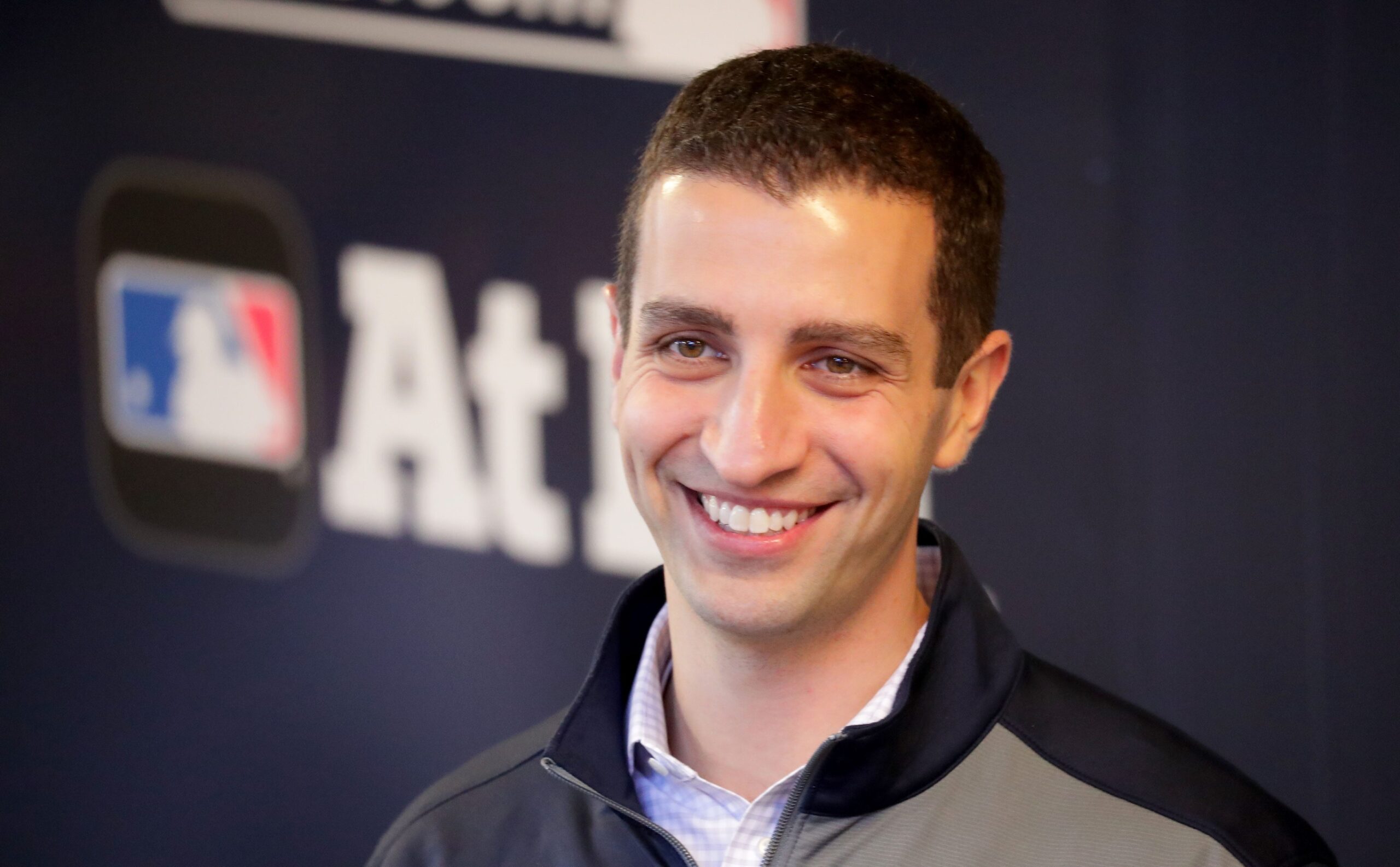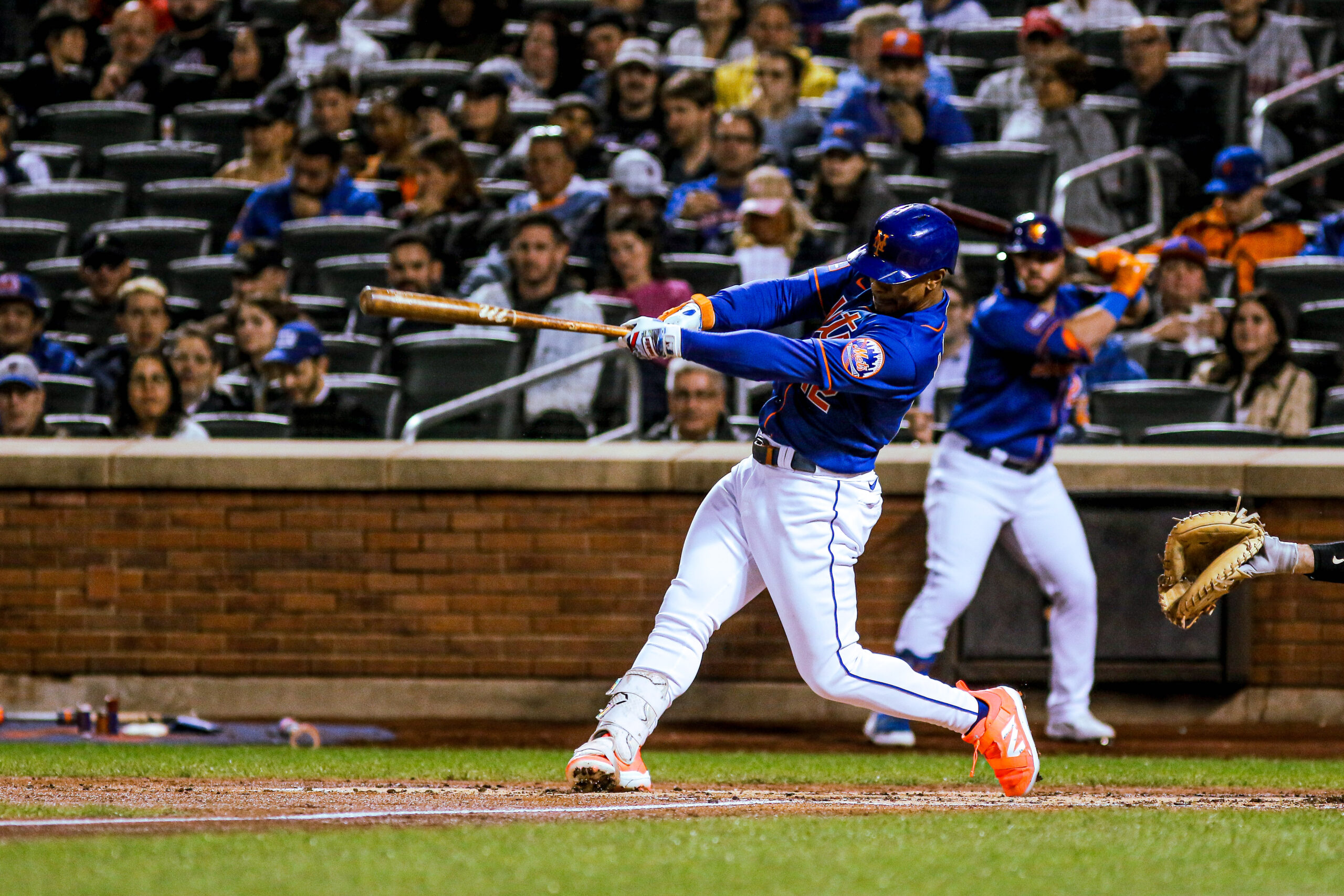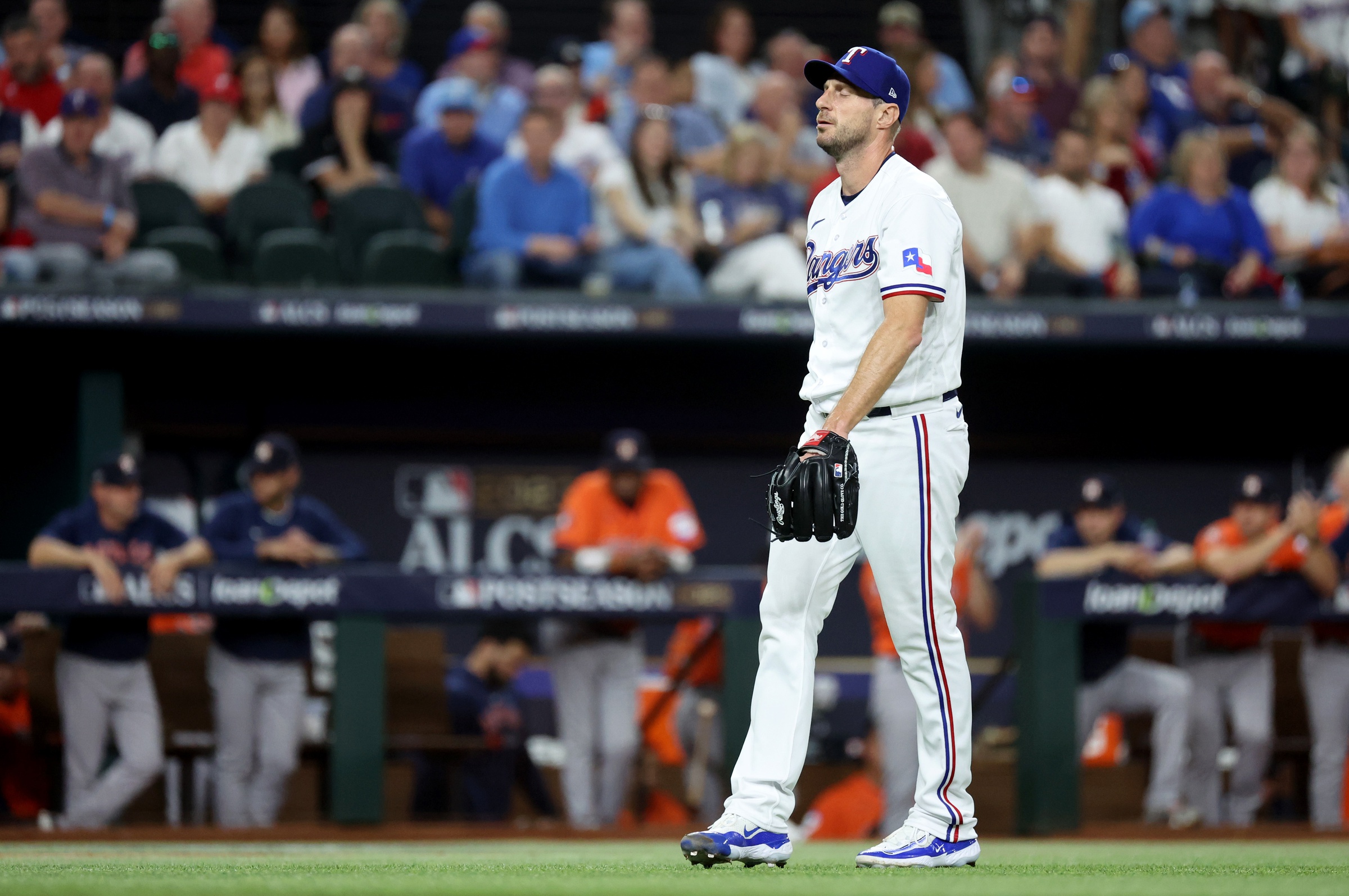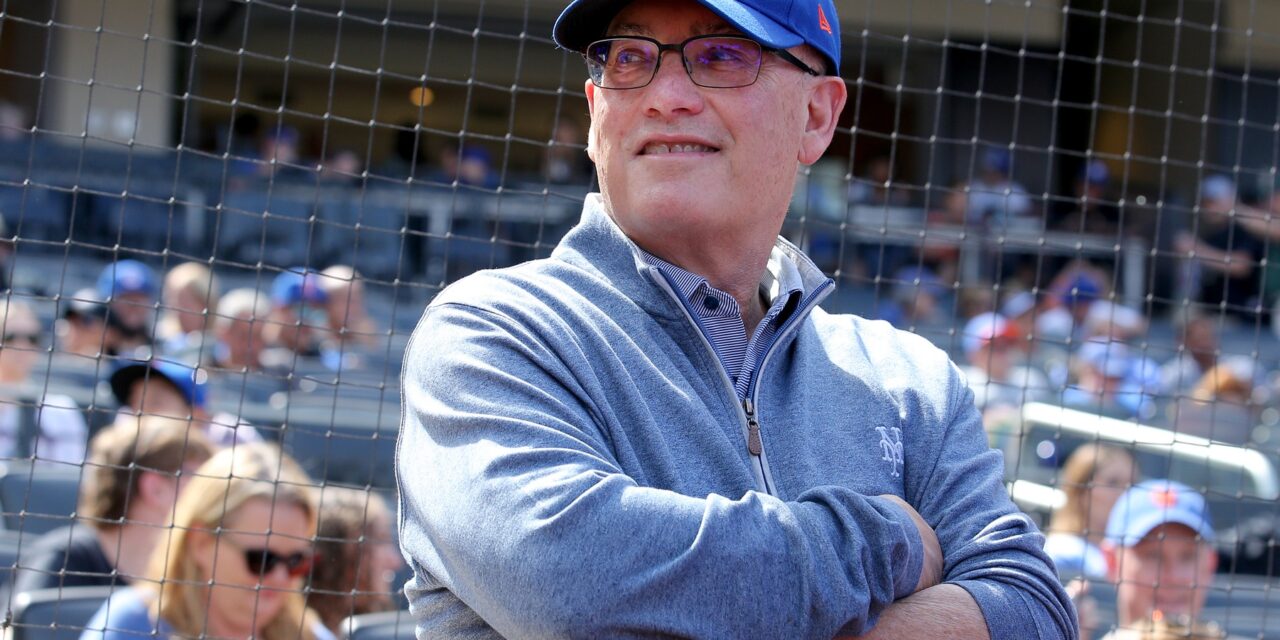
David Stearns. Photo by Mike De Sisti
With the World Series over and the offseason officially underway, it’s time to take inventory of how much payroll the Mets already have committed heading into the winter.
Simple Guaranteed Contracts
- OF Brandon Nimmo | 8 yrs/$162.0M (2023-2030) [$20.25M AAV]
- OF Starling Marte | 4 yrs/$78.0M (2022-2025) [$19.50M AAV]
- RHP Kodai Senga | 5 yrs/$75.0M (2023-2028) [$15.00M AAV]
- RHP Jose Quintana | 2 yrs/$26.0M (2023-2024) [$13.00M AAV]
- IF/OF Jeff McNeil | 4 yrs/$50.0M (2023-2026) + $15.25M club option for 2027 or $2.0M buyout [$12.50M AAV]
Total Salary Guaranteed Contracts: $80.25M
For MLB Luxury Tax calculation purposes, salaries for players on guaranteed deals are determined by the Average Annual Values of their contracts. An easy simple ($/years) calculation. One thing to keep in mind though is how option years and/or buy-outs are calculated.
Contracts with player options are considered guaranteed years and as such the AAV calculation will include the option year. All other options (club, vesting, mutual) are considered non-guaranteed. Any buyouts associated with these options are included in the AAV calculation but the options themselves are not.
For example, Jeff McNeil’s contract pays him $48 million during the life of the contract, however, since it has a $2.0M buyout with his 2027 club option, the AAV ends up being $12.50M instead.

Brooks Raley. Photo by Roberto Carlo
Guaranteed Contracts From Option Years
- LHP Brooks Raley | 1 yr/$6.5M via exercised club option, $1.25M buyout not used (2024) [$5.25M AAV]
- C Omar Narváez | 1 yr/$7.0M via exercised player option [$7.50M AAV]
Total Option Year Contracts: $12.75M
These are generally the same as the previous category, however, the flipside of how buyouts are included in AAVs fall out here. Since Raley’s 2024 option buyout was already included in previous AAV calculations but were not used, the Mets may now take a credit for the buyout amounts in the option year season. So Raley’s AAV impact is reduced by $1.25M.
Likewise, for Narvaez, his $7.0M player option was included in the original AAV calculation on his 2023 contract as a 2 yr/$15.0M deal so the $7.50M AAV carries over to 2024.

Francisco Lindor. Photo by Roberto Carlo
Guaranteed Contracts With Deferrals
- SS Francisco Lindor | 10 yrs/$341.0M with $50M deferred (2022-2031) [$32.35M AAV]
- RHP Edwin Díaz | 5 yrs/$102.0M with $26.5M deferred (2023-2027) [$17.38M AAV]
Total Deferral Contracts: $49.73M
Alright, folks strap in, grab some paper, and a pen as we take a trip down Financial Accounting 401. For any contract that includes deferred compensation, a standard $/years AAV approach cannot be used. This is because of a concept known as the “time value of money (TVM)”. Said in its simplest terms, money is worth more now than it will be at a future date due to its earnings potential.”
We are all suffering through inflation in our personal lives as we speak so I think we can all understand that a dollar right now can’t get you as much as a dollar did 10 years ago.
With this in mind, in order to factor in this devaluation of money, for AAV purposes, deferrals on a contract must be recalculated and factored in based on their “net present value (NPV).” This in turn generates a cost savings for teams against the luxury tax based on three main factors:
1.) How much money is deferred.
2.) How long the money is deferred for.
3.) The discount rate applied at the time of contract signing [Generally based on JP Morgan Bank’s Prime Rate].
For Lindor, $50 million of his compensation ($5M per year) is being deferred for 10 years and discounted at 4.0%. So the NPV of his $50.0M is only $32.48, a $17.52M luxury tax savings across 10 years (-$1.75M AAV reduction). So, instead of his contract having a $34.10M AAV, the team is only hit for $32.35M.
For Díaz, although only $26.5M of his compensation is being deferred, it is being deferred at a 7.0% discount rate, and for a time frame ranging from 10-to-15 years. So, the NPV of his $26.5M is only $11.39M, a $15.11M savings across 5 years (-$3.02M AAV reduction) reducing his AAV from $20.40M to $17.38M
For Ottavino, since his option is of the player controlled variety, his 2024 salary and associated deferrals were included in last year’s calculation, thus the AAV carries over. In total, $8.0M of his 2023-2024 salaries are being deferred at a 7.5% discount rate, and for a time frame ranging from 4 to 7 years. So, the NPV of his $8.0M is only $3.10M, a $4.90M savings across 2 years (-$2.450M AAV reduction) reducing his AAV from $7.25M to $4.80M.

Max Scherzer. Kevin Jairaj-USA TODAY Sports
Dead Money
- RHP Justin Verlander | 2 yrs/$86.6M (2023-2024) + $35M conditional player option for 2025, $16.98M on Astros books for 2024 and $17.5M in 2025 if option vests and is exercised [$26.36M AAV]
- RHP Max Scherzer | 3 yrs/$130.0M (2022-2024), $16.8M on Rangers books for 2024 [$26.53M AAV]
- C James McCann | 4 yrs/$40.6M (2021-2024), $650k on Orioles books for 2024 [$9.50M AAV]
- RHP Adam Ottavino | 1 yrs/$7.75M (2023) + $6.75M player option with $8M total deferrals. (Player option declined. $0.86M balancing adjustment) [$0.86M]
Total Dead Money: $63.25M
Now, for the depressing part of this segment, the flip side of the trades former general manager Billy Eppler made last season. At the deadline, the Mets sent Scherzer + $35.5M to the Rangers and Verlander + $35.0M to the Astros.
For MLB Luxury Tax purposes, the pro-rated amount of remaining salaries on both contracts are used to determine the cash impact split between 2023 and 2024. So, for Scherzer, that means 74.7% of the cash the Mets sent are on the books for 2024, and for Verlander, 75.3% of the cash applies.
Since McCann was traded before the season began, the $19M of cash sent with him is a more simplistic standard AAV calculation spreading it across the 2 yrs that were remaining on his deal.
{Updated 11/6/2023}
Oh boy…..as if payroll isn’t complicated enough….
With Ottavino declining his 2024 player option, an obscure luxury tax “balancing adjustment” is going to affect the Mets payroll for 2024. When Ottavino signed his contract, his player option was considered a “guaranteed” year for luxury tax purposes. On top of that $8M of the total $14.5M in the contract were deferred for payment between 2025 and 20235. As a result the calculated AAV was only $5.63M each year instead of the simple math amount of $7.25M.
With Ottavino off the books now, we need to recalculate what the AAV would have been for only the 1 yr of pay + deferrals. The difference between this calculation and the original AAV calculation is the “balancing adjustment” the Mets will need to account for in 2024. Nerdy mathematics below!


Pete Alonso. Photo by Roberto Carlo
Arbitration Contracts (estimated per MLB Trade Rumors)
- 1B Pete Alonso | Arbitration Year 3 ($22.00M)
- DH Daniel Vogelbach | Arb 3 ($2.60M)
- IF Luis Guillorme | Arb 3 [Super 2] ($1.70M)
- RHP Drew Smith | Arb 3 ($2.30M)
- RHP Joey Lucchesi | Arb 2 ($2.00M)
- RHP Trevor Gott | Arb 3 ($2.00M)
- RHP Sam Coonrod | Arb 2 ($0.90M)
- LHP David Peterson | Arb 1 ($2.00M)
- OF D.J. Stewart | Arb 1 [Super 2] ($1.50M)
- RHP Jeff Brigham | Arb 1 ($1.10M)
Total Arbitration Contracts: $38.10M
Once a player reaches three years of service time (or two for players with “super 2 status”), their salaries for subsequent seasons, until they reach six years of service time, are determined based by an arbitrator based on their career and prior season performances in relation to their peers who have also gone through arbitration. Unless of course, the two sides agree to a deal before the hearing is scheduled to occur.
Alonso’s arbitration situation is certainly the most important one for the team. While the arbitration number is high, the Mets could theoretically combine the arbitration year with a potential extension to try and reduce the future AAV impact of said deal.
While Lucchesi and Peterson seem like locks to remain with the team at their estimated prices, a case can be made for everyone to be non-tendered by the team thus savings ~$12.1M in salary.

Francisco Álvarez. Photo by Roberto Carlo
MLB/MiLB Renewable Minimum Salary Contracts
$740k if on MLB roster or $120.6k if on MiLB roster ($60.3k if first time on a 40 man roster)
- C Francisco Álvarez
- IF Ronny Mauricio
- SS Luisangel Acuña
- 3B/LF Brett Baty
- DH Mark Vientos
- LHP Josh Walker
- RHP Tylor Megill
- RHP José Butto
- RHP Phil Bickford
- RHP Penn Murfee
- RHP Reed Garrett
- RHP Grant Hartwig
- RHP Sean-Reid Foley
Total Renewable Contracts: $5.90M
Any player with less than three years of service time is subject to team-controlled renewable contracts. While teams can certainly choose to pay their pre-arbitration players more than MLB/MiLB minimum, they are under no requirement to do so.
Other MLB Luxury Tax Requirements
1/30th of the Player Benefits Pool | $17.9M
1/30th of the Pre-Arbitration Bonus Pool | $1.67M
Total Other: $19.57M
Final Total MLB Luxury Tax Payroll: $269.55M
Not only are the Mets already walking into the off-season already over the 2024 luxury tax line of $237M; they’re already estimated to be in the second-level of penalties with only ~$2.7M of space before third-level penalties before making a single move.
With sheer number of holes in the rotation and bullpen that need to be filled if the team is going to be competitive, there is a very high probability that the Mets will once again hit the special Steve Cohen fourth-tier of penalties for the 2nd season in a row. This will come with a 110% tax on every dollar spent over $297M.
















